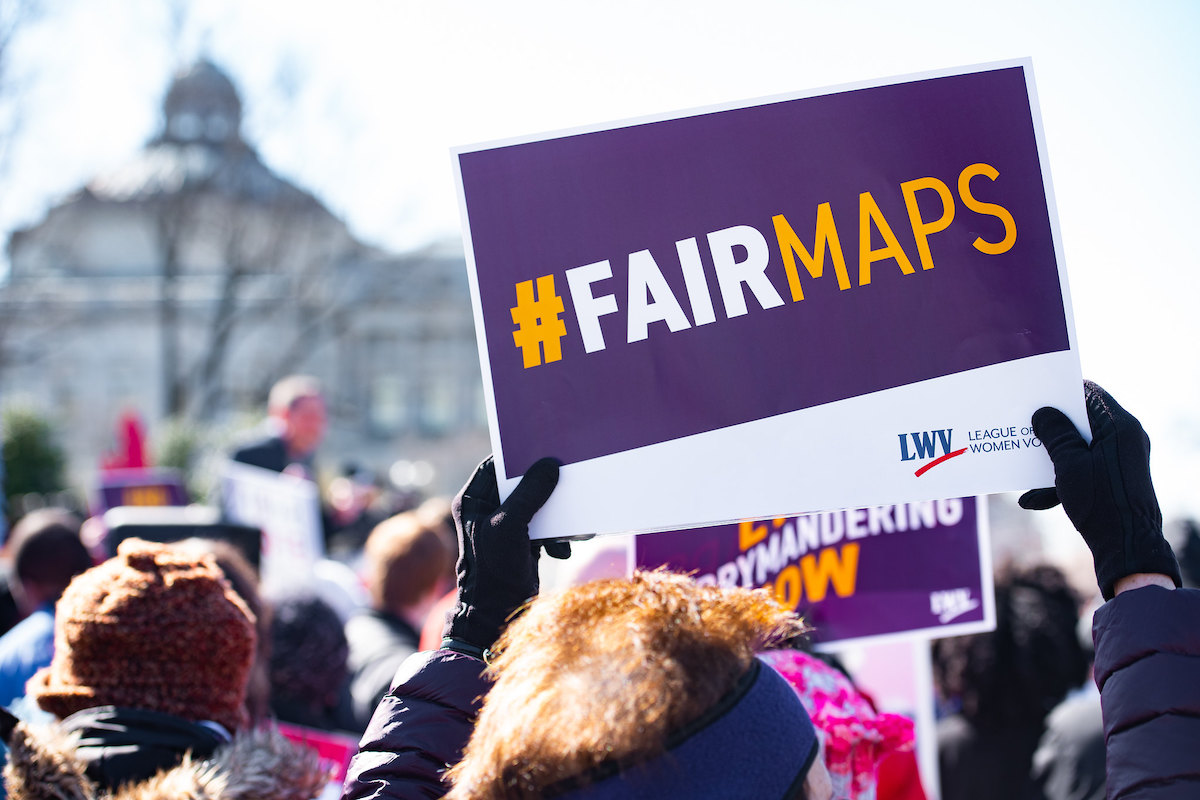By some accounts, California’s independent redistricting commission (IRC) has set the gold standard for fair elections, wresting control of legislative mapmaking from the archetypal smoke-filled backroom dealmakers who’ve made an art of keeping power to themselves.
But recent examples point to the need for more and better reforms to ensure the state’s elections are open to all.
In Los Angeles, leaked reports of city councilmembers’ racist comments amid redistricting discussions last year exposed how the system still works there. In San Mateo County, the most recent round of redistricting found the Board of Supervisors voting to preserve the status quo even after hearing its own advisory committee suggest needed changes.
In the Central Valley, a steady, unrelenting campaign led by the county’s League of Women Voters and the Dolores Huerta Foundation pressured the Tulare County Board of Supervisors to finally draw fairer maps for the 65% Latino population previously excluded from the halls of power almost completely.
Building on the Fair Maps Act
At a recent press conference hosted by California Common Cause to discuss two measures currently grinding their way through the state Assembly, AB 764 and AB 1248, speakers shared these and other stories to demonstrate the ongoing need to improve and expand the state’s redistricting process.
“We have got to institutionalize protection so that communities don’t have to fight tooth and nail for their rights,” said Dora Rose, deputy director of the California League of Women Voters, one of the sponsors of the two bills. “We’ve got to build on the success of the Fair Maps Act.”
“Otherwise, we end up with older white people in charge, who just don’t reflect the Latino people, the API people, the Indigenous people, the Black people, the youth, that together make up the majority of our vote,” Rose said.
California passed the Fair Maps Act (AB 849) in 2019 to strengthen earlier legislation in 2008 and 2010 that led to the IRC’s formation and its initial implementation following the 2010 Census.
Closing loopholes in the redistricting process
But the FMA had “a huge loophole,” said Jonathan Mehta Stein, of California Common Cause: It failed to specifically address incumbent protection. AB 764 closes that, banning drawing districts “for the purpose of favoring or discriminating against an incumbent or political candidate.”
It goes on to spell out specific, uniform and prioritized criteria for how district boundaries are to be determined up and down the state and compels local IRCs to issue reports explaining their ultimate decisions.
AB 764 also mandates set numbers of public hearings and workshops for the process, including provisions on timing, accessibility and noticing. It requires that draft maps be unveiled in time for the public to effectively respond and clarifies the legal process for resolving disputes.
AB 1248 orders that any county, city, school district or community college district serving more than 300,000 people must establish an IRC by the time the next batch of population data from the U.S. Census comes in to set the redistricting process in motion, as it does every 10 years at the beginning of the decade.
If the jurisdiction fails to form a committee, the legislation provides guidelines on how to meet the requirement.
This will bring into the fold 17 California counties that do not currently have IRCs (five already do), plus the cities of Anaheim, Bakersfield, Fresno, Irvine, Long Beach, Los Angeles, Oakland, Riverside, Sacramento, San Diego, San Francisco, San Jose, Santa Ana and Stockton, 20 school districts and many community college districts, too.
It specifies standards for appointments to the commissions such as residency qualifications and an ability to be impartial, as well as prohibitions, for instance, against doing redistricting work outside of public view.
Along with Rose and Stein at the briefing were representatives of the Asian Law Caucus, Asian Americans Advancing Justice Southern California and the ACLU, all of which were primary sponsors of one or both of the measures.
Maps designed to protect incumbents
Also on hand was Nicolas Heidorn, whose report, “The Promise of Fair Maps,” published earlier this year, studied the successes and shortcomings of the Fair Maps Act in the subsequent redistricting process. Heidorn’s findings, Stein said, were foundational in the drafting of the two measures currently under review.
He wrote that the FMA improved the transparency of and public participation in the 2020 redistricting cycle, with some jurisdictions surpassing its requirements.
“The FMA was broadly successful in promoting a more transparent and participatory local redistricting process” and producing maps that better reflect the state’s diverse communities, the report found.
But it also noted “ambiguities, loopholes, and deficiencies in the legislation that undermined the law’s important goals and were often exploited to protect incumbents.”
“In many jurisdictions, incumbency protection proved to be the overriding criterion for how maps were drawn.”
“This is a statewide problem that demands statewide solutions,” Stein said.
AB 764 and AB 1248, sponsored by Assemblyman Isaac G. Bryan, D-Culver City, and
Senator Ben Allen, D-Santa Monica, both cleared the Assembly’s Local Government committee on April 26 and will now be taken up by the Appropriations committee.
If approved there, they’ll go to the full Assembly for a vote, and then have to repeat that process through the State Senate before arriving on Gov. Newsom’s desk.




